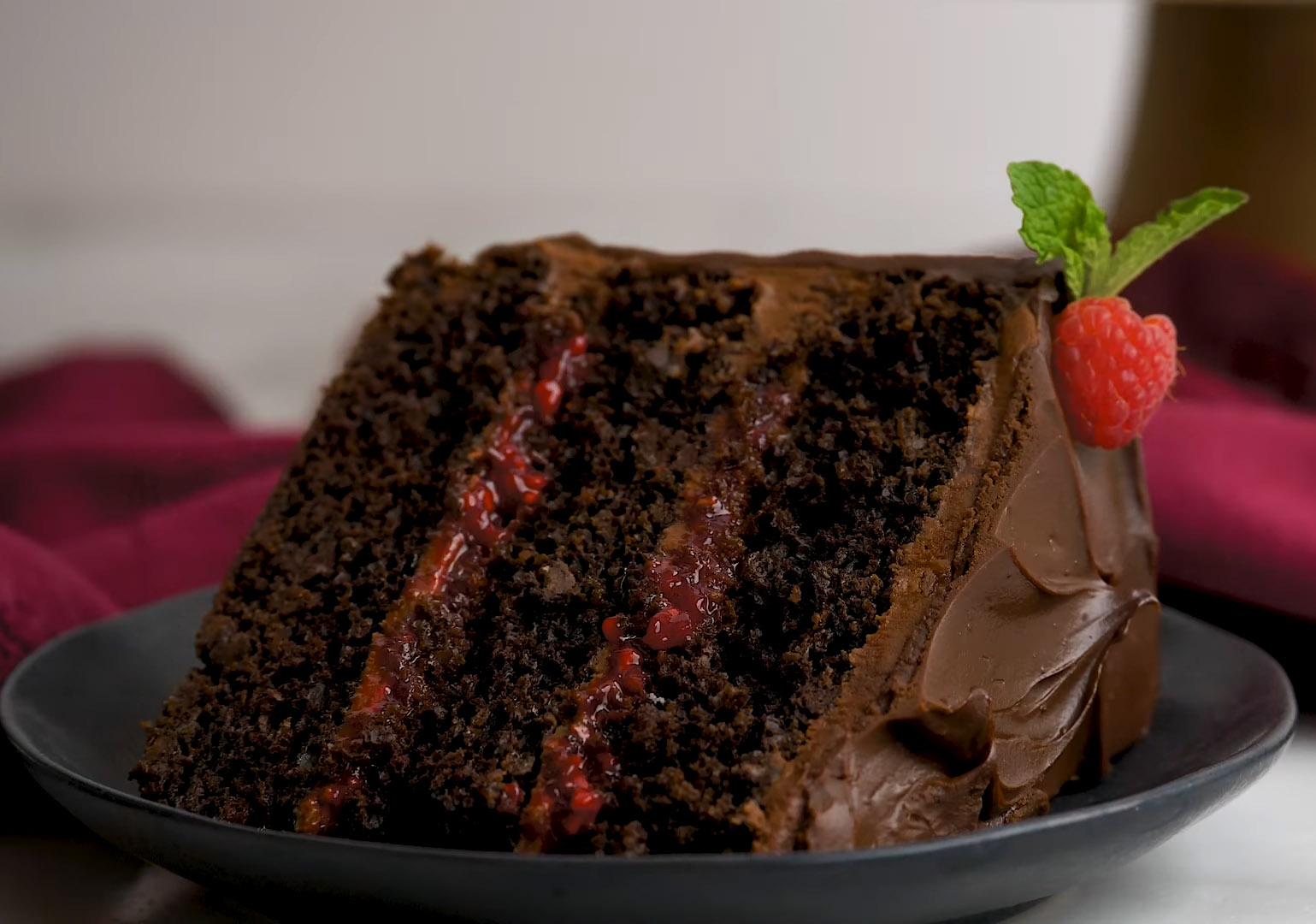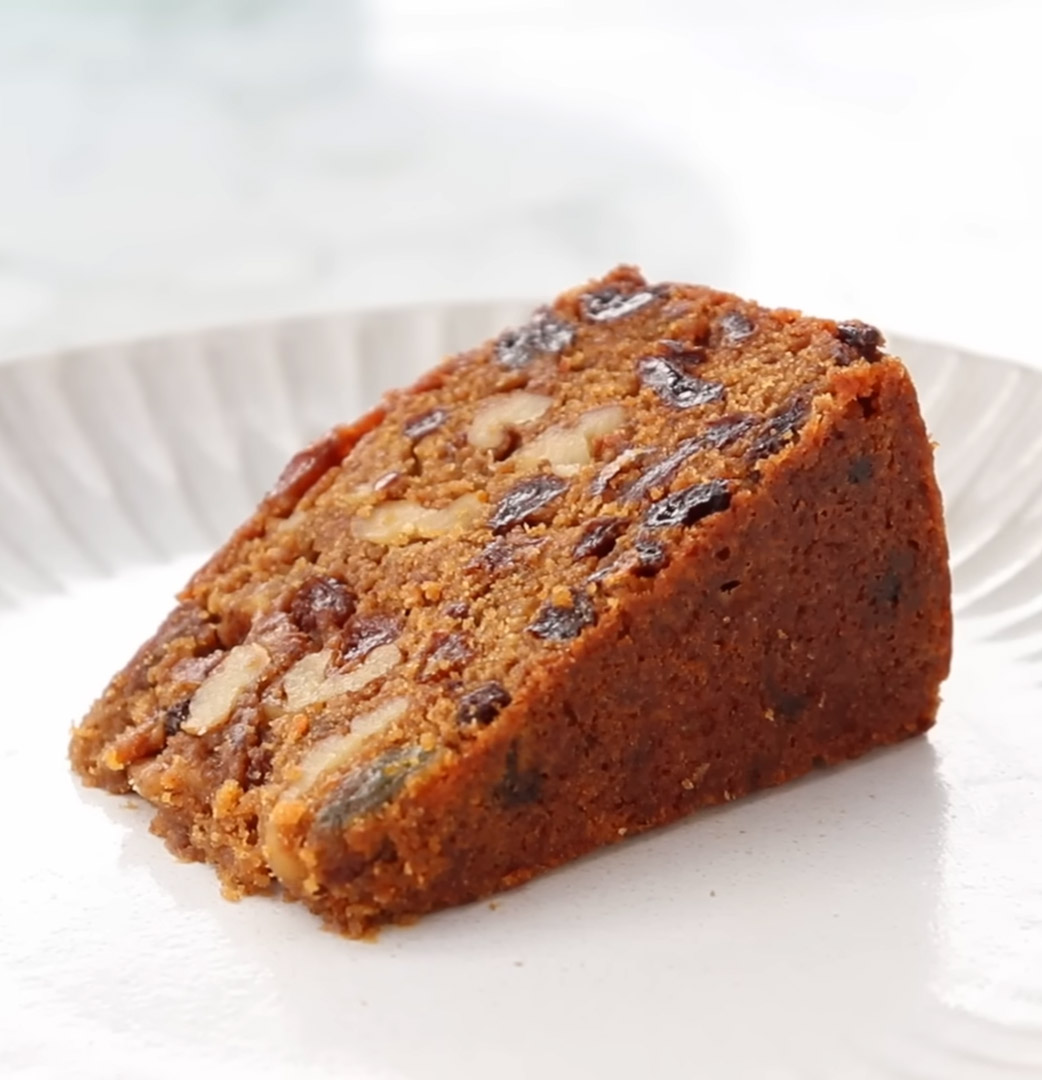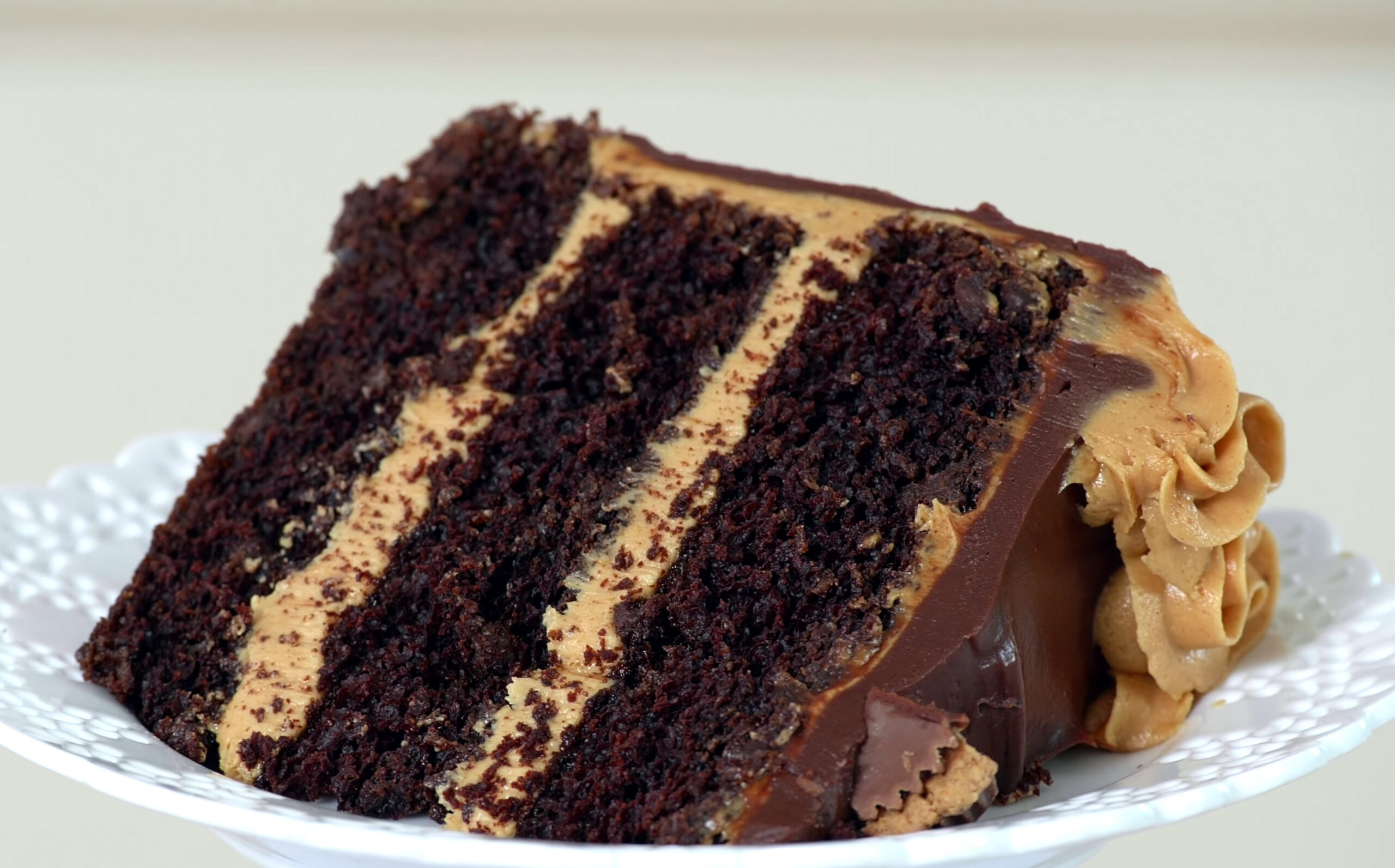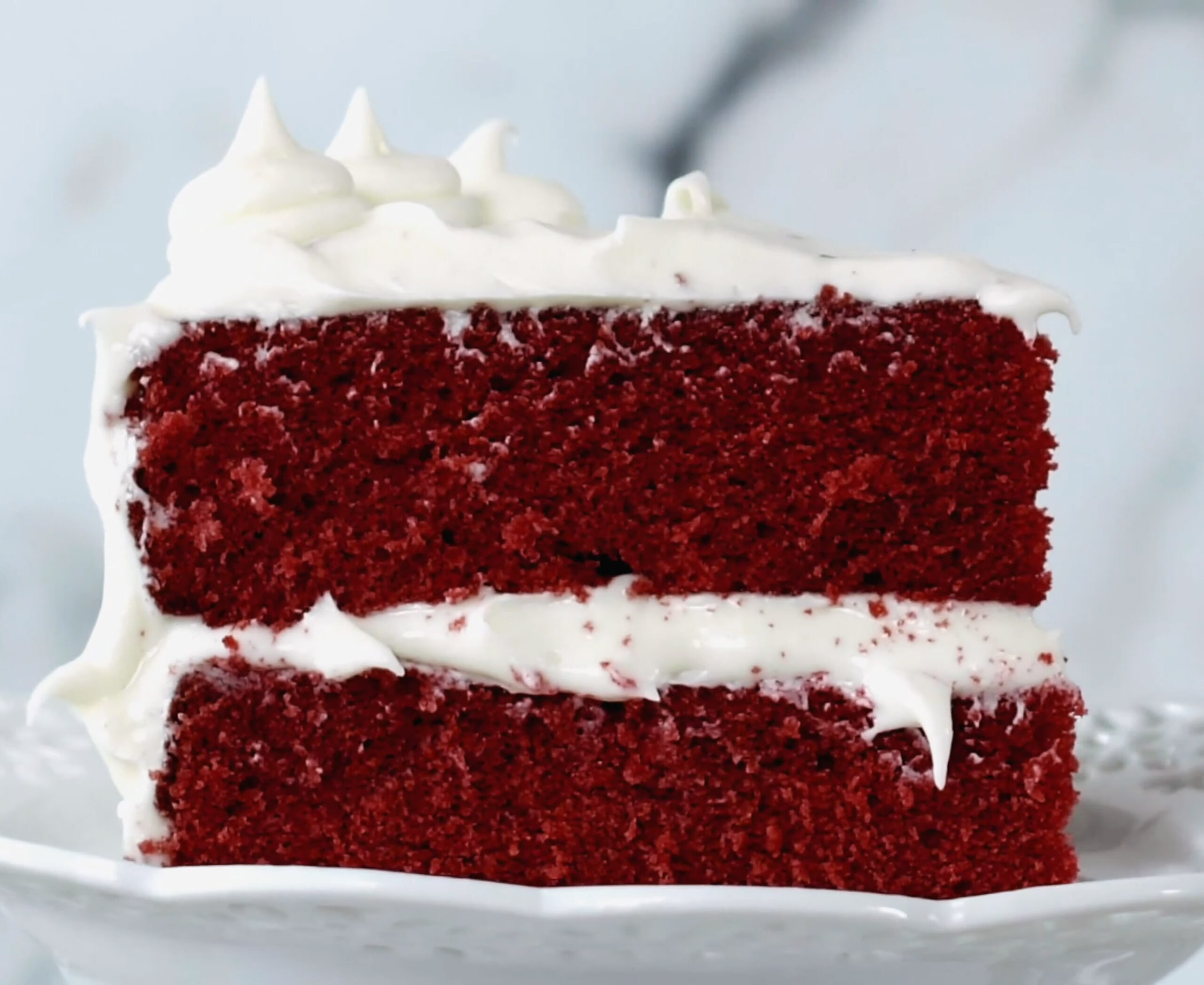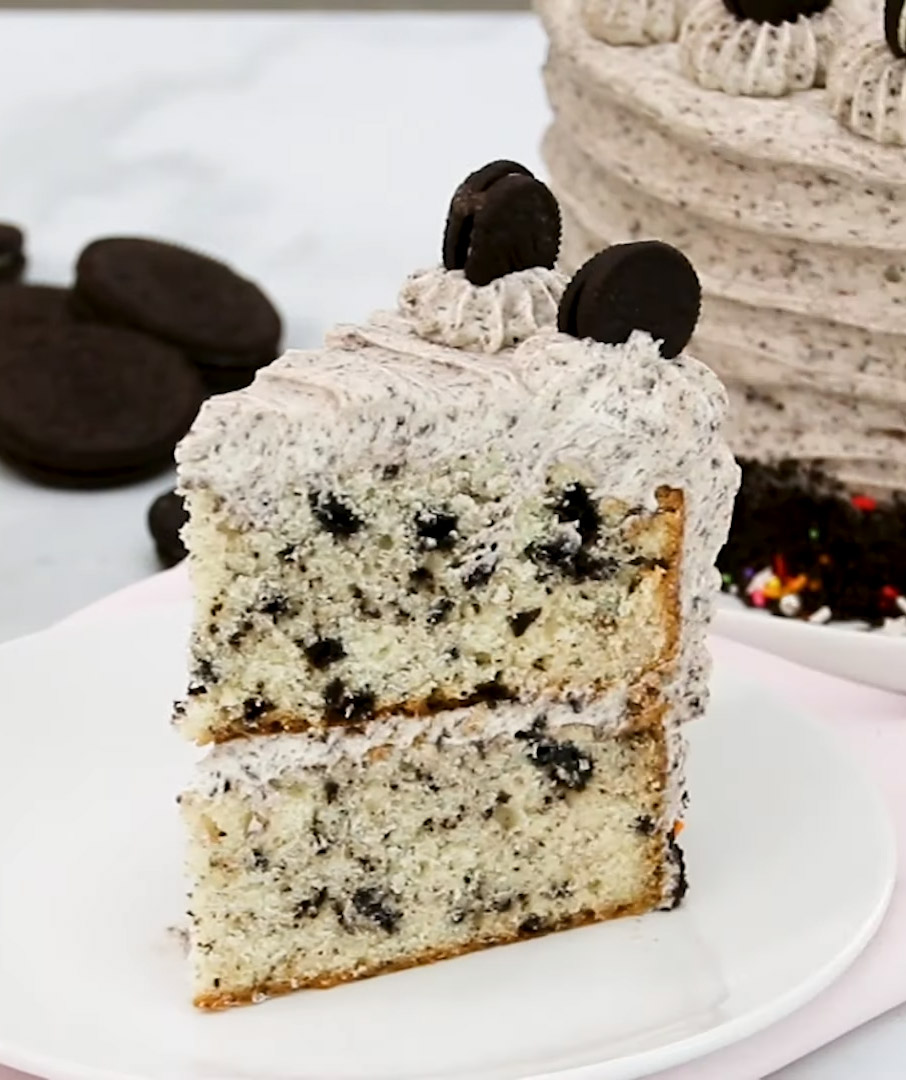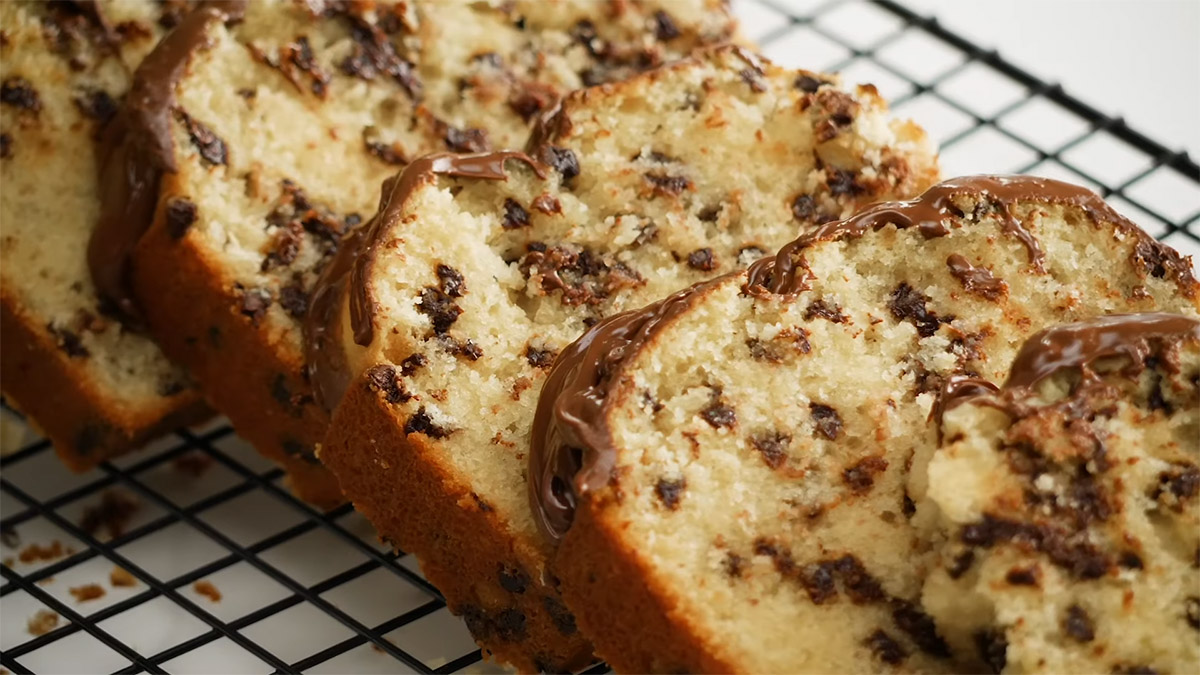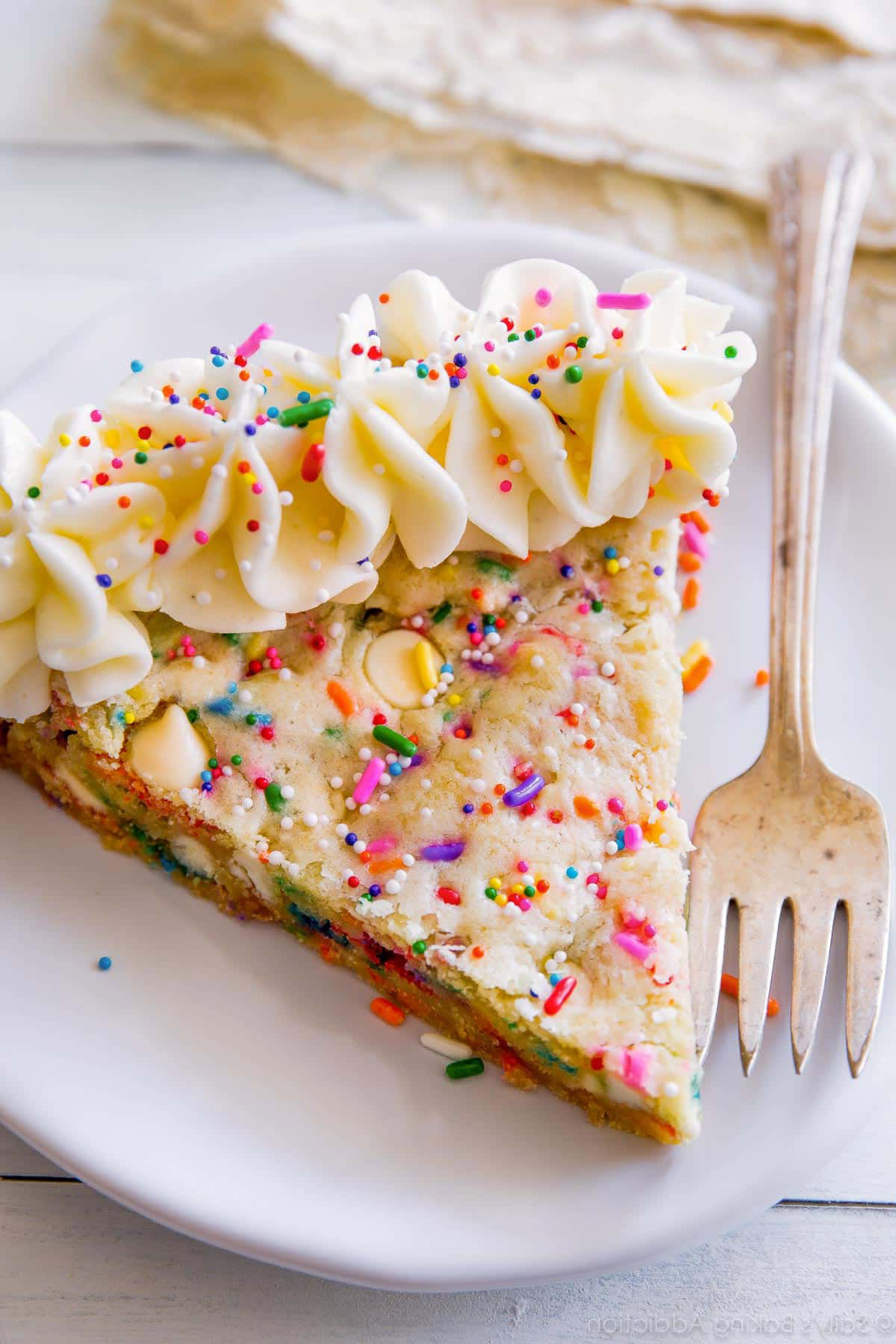There’s just something about coconut that evokes feelings of warm ocean breezes and relaxation. Maybe it’s the hint of sweetness or the light, creamy texture. For me, coconut desserts are nostalgic. They remind me of childhood vacations spent on sunny beaches, making sandcastles and hunting for seashells.
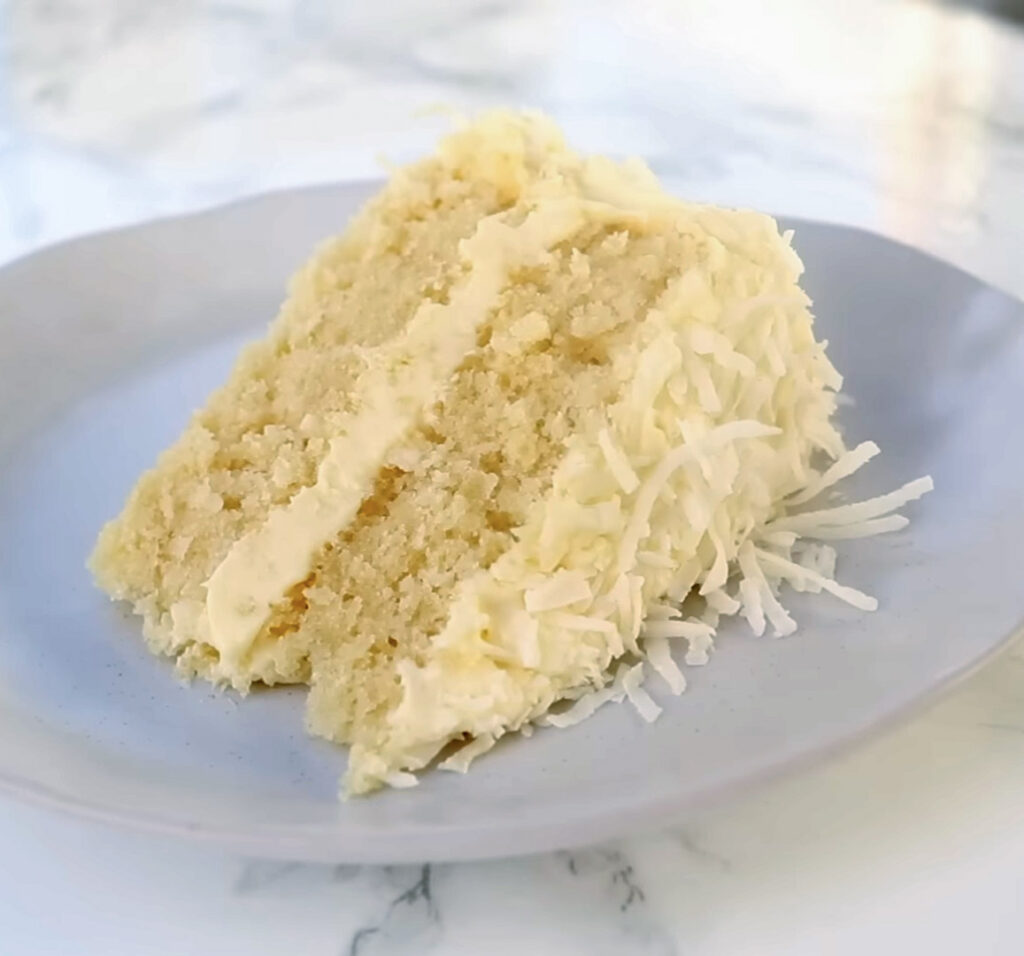
If you’re a coconut fan like me, get ready to experience this tropical treat. This simple coconut cake recipe delivers a perfect balance in every sumptuous bite.
Why You’ll Love This Easy Coconut Cake Recipe
There are countless reasons why you’re going to fall head over heels for this recipe:
- Unbelievably moist: No one’s here for a dry cake, and the recipe for a moist coconut cake below will make sure every slice is as delightfully tender and fluffy as it gets.
- Packed with flavor: This cake doesn’t hold back on delivering a full-on coconut punch. It’s a taste of the tropics in every bite.
- Soft & fluffy: It’s easy to achieve that melt-in-your-mouth softness. The carefully selected ingredients work together to create a cake crumb that’s as light as air.
- Versatile shapes and sizes: Whether you’re in the mood for cupcakes, a Bundt cake, or layers upon layers of coconut goodness, this batter’s got you covered. It adapts to whatever form you fancy.
- Go well to all frostings: While the coconut cream cheese frosting is a divine match, don’t be afraid to mix it up. Lemon frosting, strawberry buttercream, or even chocolate buttercream—this cake plays well with others.
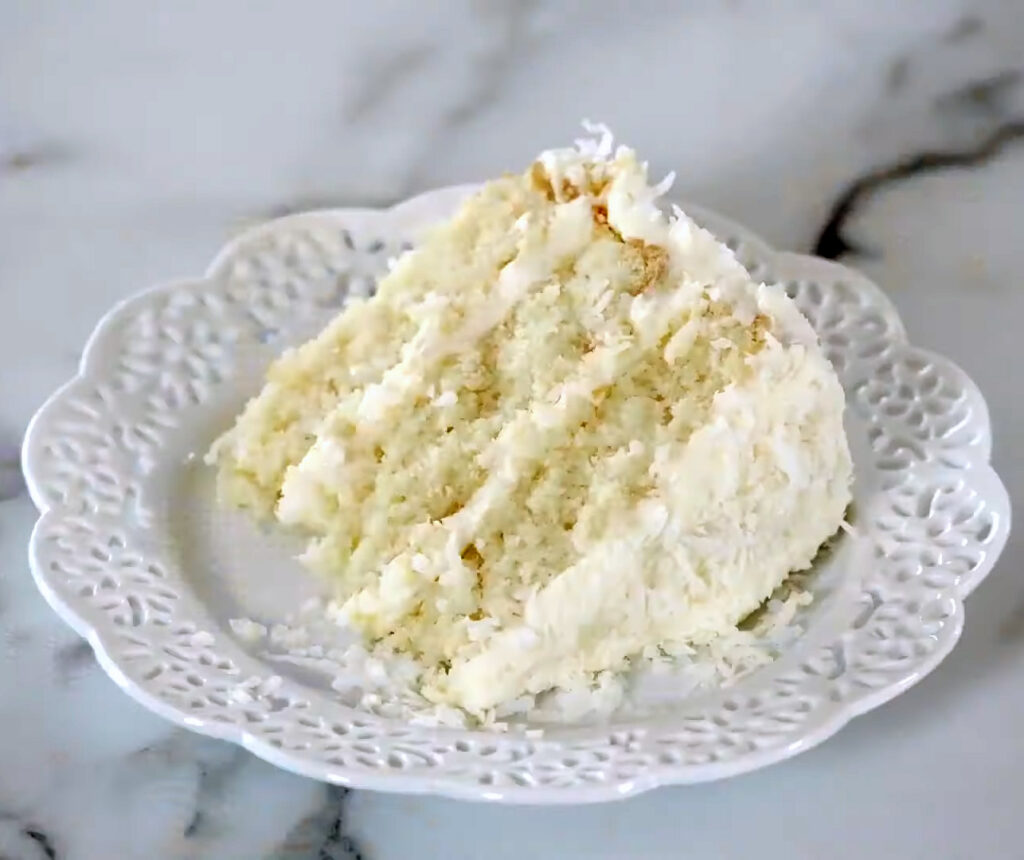
How to Make Moist Coconut Cake
Ingredients
Here is what you need to bring this delight to life (with 8 – 12 servings):
- All-purpose flour and Cornstarch: The dynamic duo that ensures our cake’s structure is on point without getting too dense.
- Baking powder: Just a bit to help the cake rise and enhance the flavors.
- Unsalted butter: Make sure it’s room temp so it creams nicely with the sugar.
- Salt: If you’re using salted butter, feel free to skip this.
- Unflavoured vegetable oil: I love canola, but any neutral oil will do to keep our cake moist.
- White granulated sugar: When it’s creamed with butter, these crystals will leave room for air pockets – the secret sauce for that fluffy, airy texture.
- Eggs: Have them at room temperature.
- Vanilla extract: You know what the difference between a plain cake and an aromatic one is? A drop of vanilla extract!
- Coconut extract: Testing this recipe with and without it, I’ve found coconut extract isn’t just some add-on. It’s the essence of the cake’s tropical vibe. You’ll find it chilling near the vanilla extract at the store.
- Canned coconut milk: Don’t mistake this for the beverage kind. The canned products are thicker and creamier and bring a depth of flavor that the regular milk just can’t match. Look for it near the Thai food essentials.
- Shredded coconut: Here’s where I take a left turn and suggest using sweetened shredded coconut. It’s moister than its unsweetened counterpart, which means a lot for our cake’s texture. If you’re wary of long shreds in your cake, give it a quick blitz in the food processor. I’ve dialed down the sugar in the batter to balance out the added sweetness from the coconut, so we’re all set.
Don’t forget you’ll also need something for the frosting:
- Unsalted butter and Cream Cheese: The foundation of our frosting; make sure they’re at the right temperature. The butter should be room temp and the cream cheese cold for that perfect spreadable consistency.
- Icing sugar: We all want that ultra-fine, silky frosting, after all. Powdered sugar works in a pinch, but my go-to is always icing sugar, for its cornstarch content adds volume and stability to my frosting.
- Vanilla extract & Coconut extract: They keep the theme going strong, enhancing the frosting with layers of flavor.
- Shredded coconut: Stick with the sweetened kind for moisture and a little extra sweetness.
Making the Cake
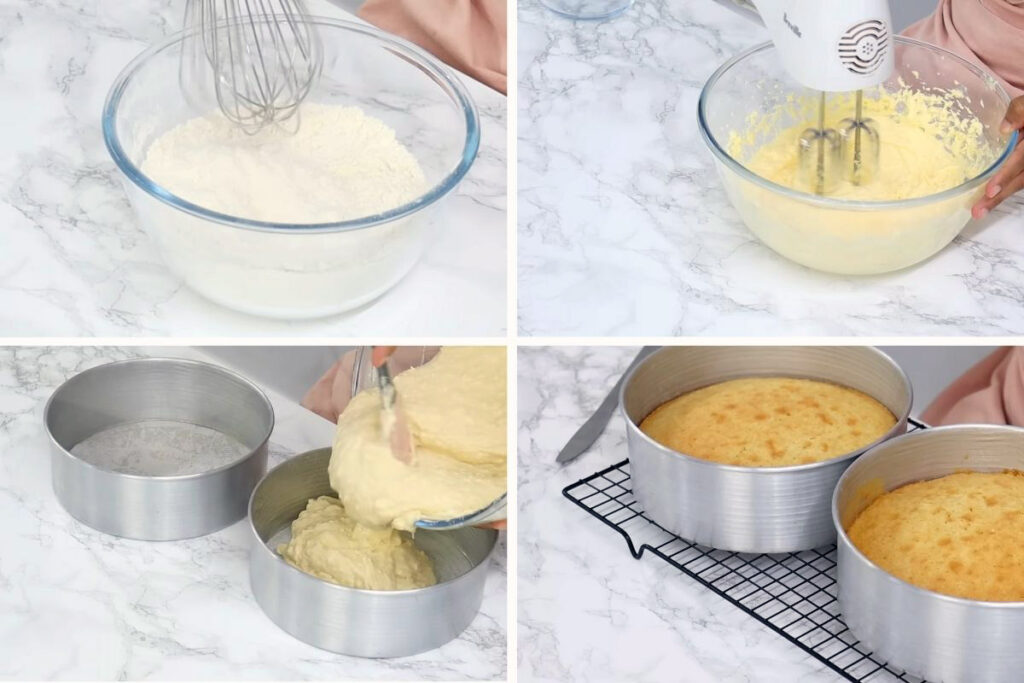
Step 1:
Preheat the oven to 320°F (160°C) with the fan setting on. Grease two cake tins (I use the 6-inch ones) and line their bottoms with parchment paper. Trust me, you don’t want your cake sticking; I’ve had my fair share of casualties without this step.
Step 2:
Take a bowl and sift in your all-purpose flour, salt, baking powder, and cornstarch. Give it a good whisk and mix until everything is nicely blended together. This ensures our cake has a light and airy texture.
Step 3:
In a separate bowl, throw in the butter, vegetable oil, and sugar. With an electric mixer, cream them together until they’re looking light in color. This usually takes about 2 minutes and it’s a step I swear by for getting that perfect cake fluffiness.
Step 4:
Now, add the eggs one at a time, beating well after each addition. Don’t rush it; about 10-15 seconds between eggs does the trick. Remember to scrape down the sides of the bowl to make sure everything’s getting mixed in.
Step 5:
Add in the vanilla and coconut extracts, along with half of your canned coconut milk. Mix these in until everything’s looking cozy and well combined.
Step 6:
Fold in half of the dry ingredients you have mixed into the flour mixture. Use a spatula just until it’s incorporated. Pour in the remaining coconut milk, give it another gentle mix, then add the rest of the dry ingredients. Fold everything together until just combined.
Step 7:
Add in the shredded coconut and use the spatula to fold it in. Keep it light and just rightly mixed.
Step 8:
Pour the batter evenly into your prepared cake pans. Pop them in the oven for about 35 minutes. You’re looking for a toothpick to come out clean (with as few moist crumbs as possible) as a sign they’re done.
Step 9:
Remove from the oven and allow cakes to cool in pans for 20 minutes before putting them onto a rack to cool completely.
Making the Frosting
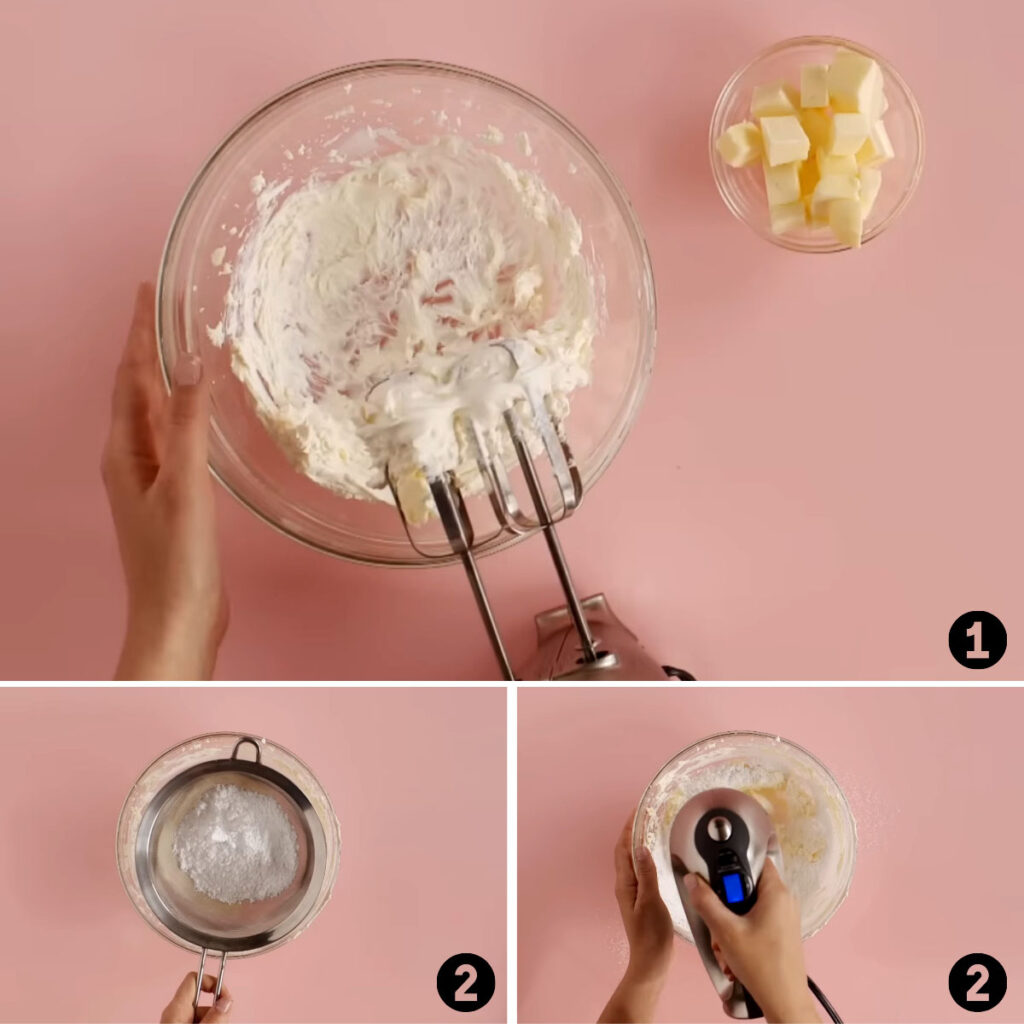
Step 1:
Let’s start by giving the butter a good creaming for a few minutes until it’s light and fluffy. A hand mixer or stand mixer at medium to high speed will do the trick.
Step 2:
For the icing sugar, add it in three batches while mixing on low speed to avoid a sugar storm in your kitchen. Make sure each batch gets fully incorporated before adding the next.
Step 3:
Toss in the cold cream cheese, coconut, and vanilla extracts. Keep mixing until the frosting reaches a smooth, lush consistency. Go easy, though—overmixing can thin it out more than we want.
Decorating the Cake
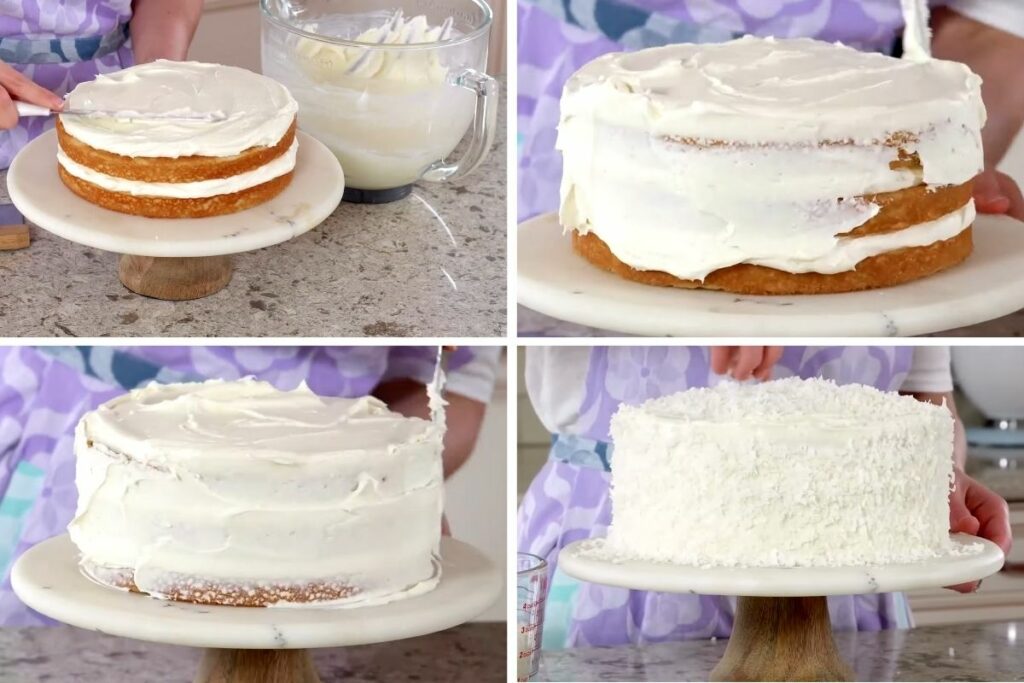
Step 1 (optional):
If you’re feeling fancy, trim the caramelized edges off the cake layers. It’s all about looks and is optional, but it gives the cake a neat, professional finish.
Step 2:
Slather a generous layer of frosting on the first cake layer, then gently place the second layer on top.
Step 3:
Now, frost the top and sides. An offset spatula or knife is your best friend here for spreading. To finish, press shredded coconut into the frosting all around the cake.
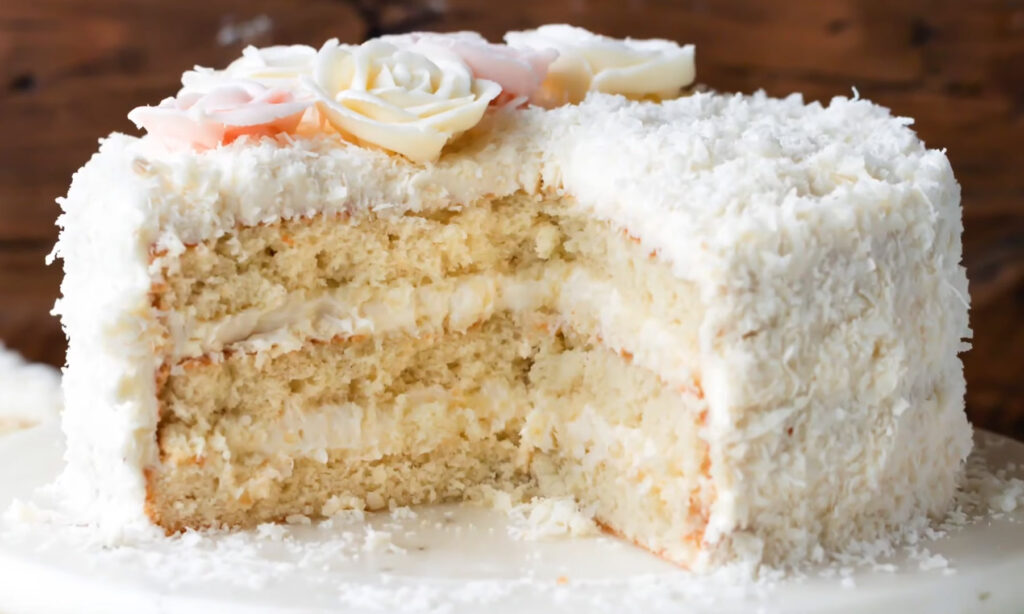
Some Notes on Making Coconut Cake Recipe With Coconut Milk
Your homemade cake is ready to be enjoyed! Here are some additional tips to ensure the moist coconut cake recipe reaches its full potential:
- You can get a jump on your baking by making the cake layers ahead of time. Just bake them, let them cool, and keep them wrapped up at room temperature until the next day. The same goes for the frosting. It can be whipped up ahead of time, then covered and tucked away in the fridge until you’re ready to use it.
- When coconut extract isn’t available, go ahead and use half a teaspoon of almond extract for every teaspoon of extract you need. It changes the flavor profile slightly, but you’ll still end up with a delicious result.
- My oven’s fan function is my secret weapon for getting cakes and cupcakes done faster. If this isn’t the cake for you, don’t worry. Just crank up the heat to 350°F, and you’re in business.
- A stand mixer with a paddle attachment is my go-to for starting the mixing process. But for that final blend, switching to hand mixing prevents overworking the batter—a tip that’s saved many a cake in my baking days.
- The firm, cold variety of cream cheese is your best bet for frosting. It’s particularly important in warmer climates where frosting tends to soften quickly. If you find your frosting getting too soft, a short chill in the fridge followed by a quick re-whip will bring it back to the right consistency for piping.
- If cream cheese frosting isn’t your thing, vanilla buttercream is a fantastic alternative. Add a twist with canned coconut milk and a teaspoon of coconut extract for a rich yet subtle flavor.
- If you go with a decadent cream cheese frosting, the cake will need to be refrigerated after about half a day at room temperature. Place the cake in an airtight container before storing it in the fridge to prevent it from drying out. Cakes with cream cheese frosting typically last up to a week in the cold.
- If you opted for a different frosting without cream cheese, your cake can stay at room temperature for a few days. Remember to keep it covered with plastic wrap or nestled in an airtight container to maintain freshness.
Frequently Asked Questions
Why Did My Coconut Cake Sink?
It likely sank due to underbaking or opening the oven door too early. Make sure to bake it fully and keep the oven door closed to maintain a consistent temperature.
Why Is My Coconut Cake Dense?
A dense cake usually means over-mixing the batter or measuring the flour incorrectly. Aim for a gentle mix and use the spoon-and-level method for flour.
How Can I Fix a Dry Coconut Cake?
A simple syrup made with water and sugar can work wonders. Just poke some holes in the cake and brush the syrup on top. This adds moisture and keeps your cake nice and fluffy.
Can I Use Desiccated Coconut Instead of Shredded?
Sure. Remember that desiccated and flaked coconut are usually finer and less sweet. If you do use it, you might want to add a little extra sugar to your batter to compensate for the sweetness you’re missing.
Can I Use Coconut Milk from a Carton?
For the best coconut cake recipe, stick with canned coconut milk. The canned variety has a much higher fat content, which is important for achieving the right texture. Coconut milk from a carton is typically thinner and watered down, and it won’t yield the same results.
Grab your mixing bowls and get ready to bake this homemade coconut cake!
Discover More Unique Cake Recipes:
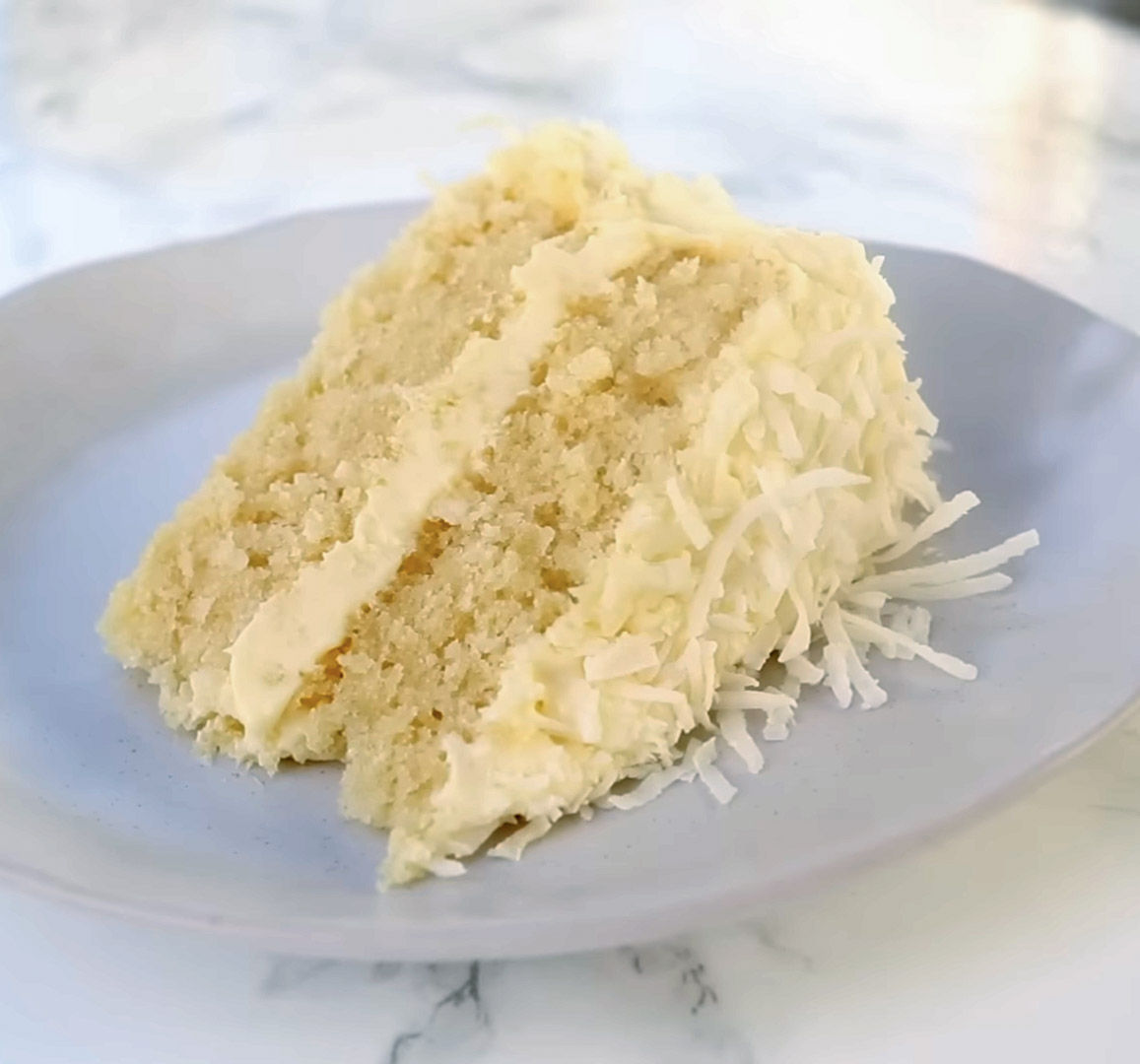
Coconut Cake
Ingredients
For the Cake:
- 1 ½ cups all-purpose flour
- ⅙ cup cornstarch
- ⅔ tbsp baking powder
- ⅓ cup unsalted butter
- ⅓ tsp salt
- 2 tbsp vegetable oil
- 1 ⅙ cup granulated sugar
- 2 large eggs
- 1 tsp vanilla extract
- ⅔ tsp coconut extract
- ⅚ cup canned coconut milk
- ⅔ cup sweetened shredded coconut
For the Coconut Cream Cheese Frosting:
- ⅔ cup unsalted butter softened
- 1 cup cold cream cheese
- 3 cups icing sugar
- 1 tsp vanilla extract
- ⅔ tsp coconut extract
- 1 cup sweetened shredded coconut
Instructions
Making the Cake:
- Preheat the oven to 320°F. Grease and line two 6-inch cake pans.
- Sift flour, salt, baking powder, and cornstarch into a bowl. Whisk to blend.
- In another bowl, cream together butter, oil, and sugar until light and fluffy.
- Add eggs one at a time, beating well after each addition.
- Add vanilla, coconut extract, and half of the coconut milk. Mix until combined.
- Fold in half the dry ingredients until just incorporated.
- Pour in the remaining coconut milk and gently add the remaining dry ingredients.
- Fold in shredded coconut until evenly distributed.
- Divide batter between prepared pans and bake for 35 minutes.
- Allow cakes to cool in pans for 20 minutes before transferring to a wire rack to cool completely.
Making the Frosting:
- Beat butter for a few minutes until light and fluffy.
- Gradually add the icing sugar while mixing at a low speed.
- Add cold cream cheese, vanilla, and coconut extracts. Mix just until smooth.
Decorate:
- Trim caramelized edges off cooled cake layers if needed.
- Place one layer on a plate and spread with a layer of frosting.
- Top with a second layer and frost the top and sides of the cake.
- Press shredded coconut into the frosting on the sides and top of the cake.
Notes
- For best results, use canned full-fat coconut milk and sweetened shredded coconut.
- Cake layers and frosting can be made 1 day ahead and assembled later.
- Substitute almond extract if coconut extract is unavailable.
- A fan-assisted oven cooks cakes faster at 320°F. For conventional ovens, use 350°F.
- Switch to hand mixing after initial mixing to avoid over-beating batter.
- Refrigerate the finished cake if using cream cheese frosting after ½ day at room temp.


